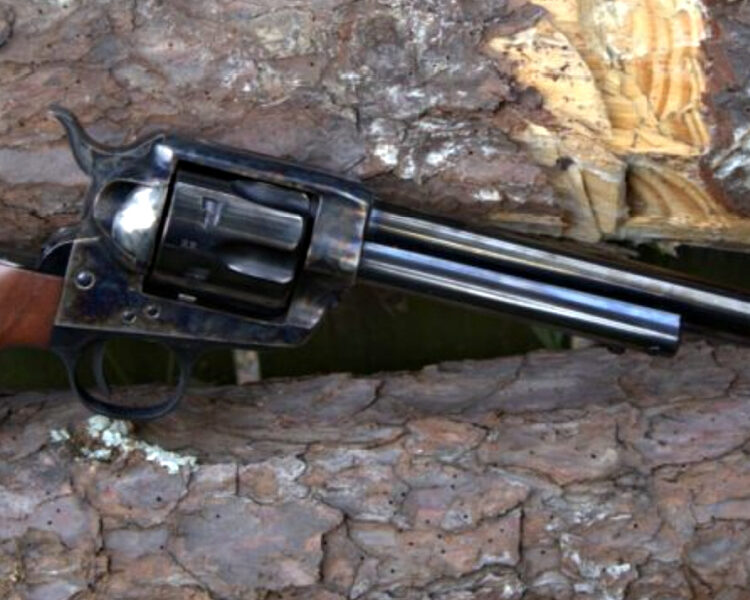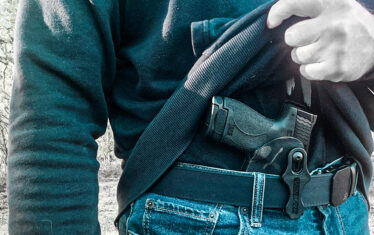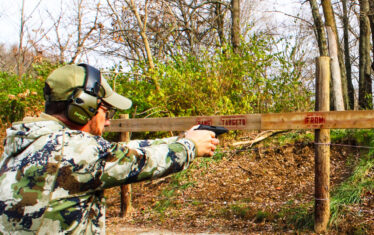For a few generations going, the Colt 1911 has held as a firearms icon not only in terms of history made with that style of handgun, but to be so prevalent that it is instantly recognizable. But for the generation that immediately preceded it, the Colt Peacemaker was that pistol.
The Colt Peacemaker is a staple of Western television and film that shapes the world’s impression of us as well as our own self-image, but before that, it was birthed as a military handgun that served the US Army for decades and paved the way for the 1911.
Indeed, the Peacemaker had so much staying power that it took a century to move beyond it as to what a handgun ought to be. Here is the story of the origins of the Colt Peacemaker and how it remains with us, 150 years later.
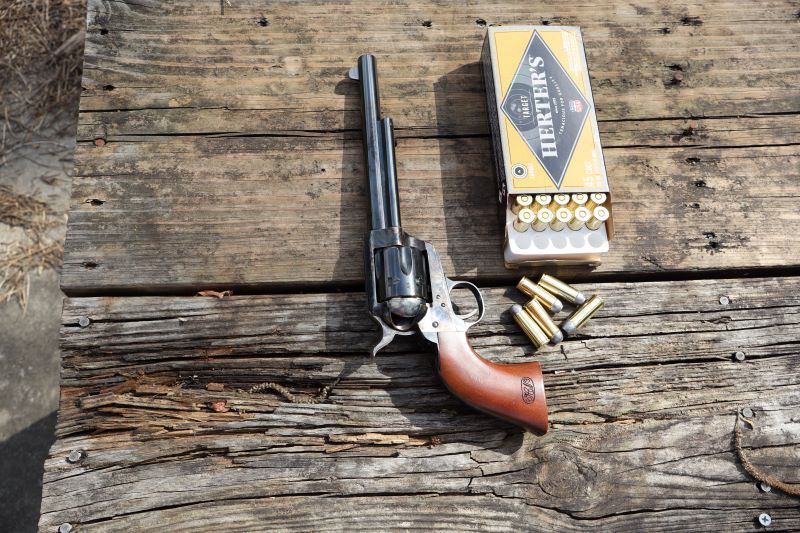
The Colt Peacemaker: A Convoluted Birth
The American Civil War was the testbed for cartridge rifles and handguns. The famed 1860 Henry and Spencer lever-action rifles saw combat alongside various breech-loading single-shot rifles like the Morse and Burnside. Smith & Wesson controlled Rollin White’s patent on a bored-through cylinder and sold thousands of No. 1, No. 1 1/2, and No. 2 cartridge revolvers to enterprising officers and enlisted men.
But the primary handguns fielded during the conflict were muzzleloaders. The primary handgun for the US Army was the Colt Model 1860 revolver, a .44 caliber cap-and-ball revolver that required paper cartridges and percussion caps.
From Muzzleloader to Cartridges
Once the war was over, it was quickly realized that cartridge revolvers were the way of the future just by ease of loading alone. But the Army also demobilized rapidly in 1865 and was keen to pinch its pennies.
While it quickly went for a breechloading cartridge rifle in the Model 1866 Trapdoor, the Colt 1860 Army remained the general issue handgun. Colt would go on to produce over 200,000 of these revolvers during its run, but could not convert them to fire metallic cartridges. Nor could any other maker come up with a suitable cartridge gun. That is, except for Smith & Wesson, who still held the Rollin White patent.

For their part, Horace Smith was keen to give the Army a fighting handgun. The No. 1 through No. 2 revolvers were small handguns chambered in anemic .22 and .32 caliber rimfire rounds. The Army wanted to keep the hitting power of the .44, which did as well on horses as men.
Smith & Wesson finally debuted their No. 3 American in 1870, just as the Rollin White patent expired. The No. 3 was a large frame revolver chambered in .44 S&W and it used a top-break mechanism with simultaneous ejection. The Smith & Wesson was lightyears ahead of anything else, but the Army Ordnance Department deemed the design to be too fragile for field use and advised Smith to improve the design. But bureaucracy prevented further action until a new set of pistol trials took place in 1872.
Among the contenders in the 1872 trials were the Colt Open Top and what would be known as the Colt 1873.
The Open Top was a purpose-built revolver built on Colt’s work converting existing 1860 Army models to fire the .44 Colt cartridge. The other revolver also fired a .45 caliber cartridge and, like the Open Top, loaded and unloaded via a loading gate on the right side of the pistol. Both were single-action handguns, requiring the hammer to be cocked for every shot. The chief difference is that the Colt 1873 had a solid cylinder frame, while the Open Top did not have a top strap over the cylinder like the old 1860 model.
The new revolver and cartridge swept the trials and was adopted by the US Cavalry in 1873 — hence the name Colt 1873. But the revolver would have a number of names assigned to it by jobbers and marketers, all of which refer to the same handgun: the Single Action Army, the Model P, and of course, the Peacemaker.

The Colt Peacemaker in Service
The US Army adopted the 7.5-inch barreled Colt 1873 chambered in .45 Colt.
In the era of black powder cartridges, the .45 Colt was a magnum of its time. The original Army load consisted of 40 grains of black powder in front of a 255-grain round-nosed bullet, which left the muzzle at about 1000 feet per second. Through the 1870s, the Cavalry strayed back to the Smith & Wesson No. 3 but could not get one that could chamber .45 Colt.
Instead, the shorter and less powerful .45 S&W round was adopted. This round was more controllable but still potent, boasting a 230-grain bullet traveling at about 850 feet per second. The Smith & Wesson guns did not stick around, but the cartridge did as the Colt could chamber and fire it.
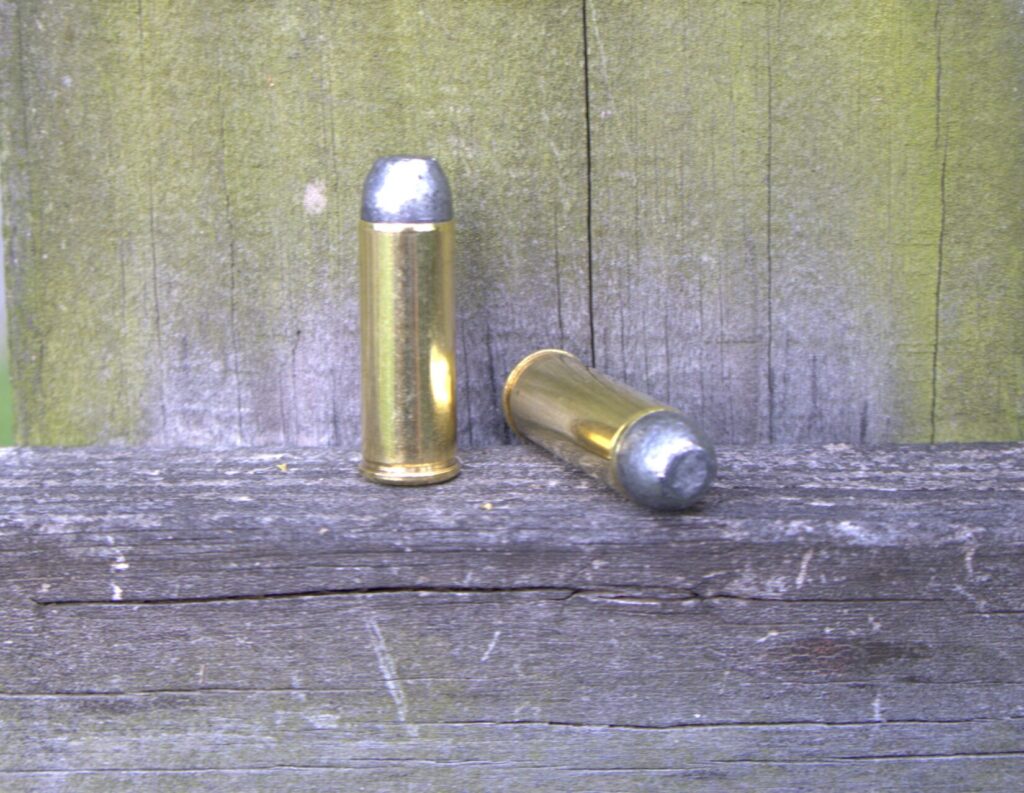
Colt Peacemaker, Soldiering On
The Colt 1873 and the new 1883 cartridge soldiered on through the Indian Wars, but after those conflicts wound down, the Army began to look at double-action revolvers like those fielded by the European powers. These revolvers could be fired by simply pulling the trigger without needing to thumb-cock the hammer.
The Army went for another Colt revolver, the 1892 Colt New Army. It was among the first handguns to have a swing-out cylinder and it chambered the light-kicking but established .38 Long Colt cartridge. But the transition to the new handgun did not go cleanly. Colt Peacemakers remained in circulation, with many remaining in militia service with cut-down 5.5-inch barrels.
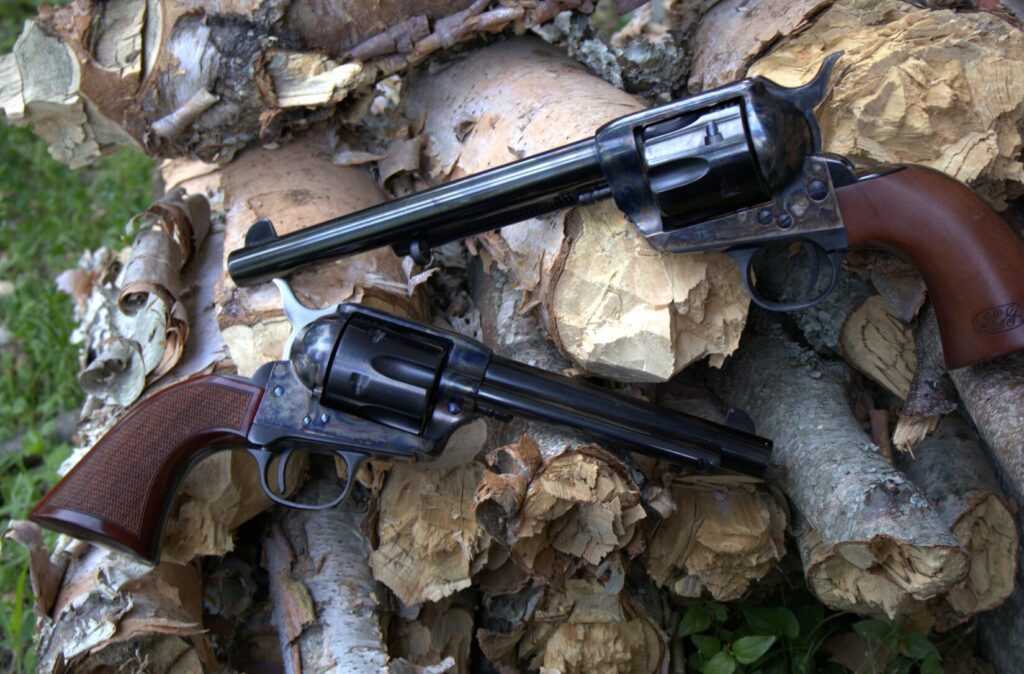
The Revival of the Single Action and the Road to the .45 ACP
While the Colt 1892 acquitted itself well in Cuba during the Spanish-American War (1898-99), the prolonged pacification of the Philippines after the war was another matter. The Philippine-American War dragged on in ebbs and flows for over a decade and the new Colt revolver’s .38 round was found wanting in power. The retired Colt 1873 was returned to service and the Army began the search for a new handgun.
Ultimately, John Browning and Colt’s engineers duplicated the ballistics of the M1883 ball round and incorporated it into what would become the .45 ACP cartridge and the Model 1911 pistol.
On the Frontier
The Colt Peacemaker was the official sidearm for the US Army for just 20 years, but it is far better known for its role in taming the Wild West in the hands of citizens, lawmen, and outlaws. But to say the Wild West was ever truly tamed is mostly a play on words. Rather, the Wild faded one generation at a time without ever truly going tame in some parts. The same was true for the Peacemaker.
The Army adopted the Colt 1873 in the waning days of the Indian Wars and was tasked with policing the Mexican border and the West. These vast expanses ensured that, by the commonality of parts and ammo, the Colt would become popular with civilians on the frontier.
To Popular Acclaim
Early on, the Colt intermingled with scads of surplus cap and ball revolvers, Smith & Wesson top-breaks, and Merwin & Hulbert revolvers, among others. Its popularity took an upswing in 1877 when Colt chambered their Peacemaker in .44-40 Winchester. The Winchester 1873 rifle in .44-40 was quickly becoming a universal rifle and the ammunition was readily available. Now, one could own a pistol and rifle that could shoot the same common caliber.
This new model was coined the New Frontier Six Shooter and it went on to be chambered in a number of cartridges, many of which coincided with Winchester’s expansion of their rifle lineup. This included the .25-20, .32-20, and .38-40 rounds. Although the .44-40 and .45 Colt versions proved to be most popular in the hands, these smaller bore versions had their fans. The famed US Marshal Bass Reeves allegedly favored the Peacemaker in .32-20.

Time marched on and the West grew a bit less wild, but demand for the Peacemaker was enough for Colt to keep it in production until 1941 in the leadup to World War II.
It was an impressive 68-year run. In that time, Colt made surprisingly few changes to the handgun, except for adding additional calibers. One notable difference is the transition away from a black powder frame to a smokeless frame. This is collector slang and has little to do with the actual strength of the frame, but the change did coincide with the shift from black powder cartridges to smokeless rounds.
Before 1896, the cylinder pin was retained by a single set screw in the front of the frame. This was changed to a spring-loaded crossbolt. This allowed the user to remove the cylinder for cleaning without any tools. Another change during this period is the switch from a bullseye ejector rod button to one that has a crescent shape.
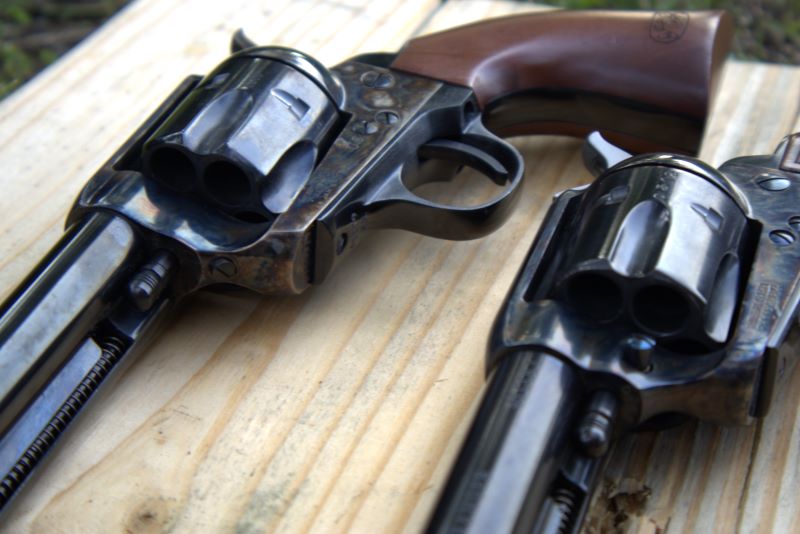
Impact on Firearms Training Doctrine
The Colt Peacemaker had a long run and was so prolific that its shooting characteristics translated to newer designs and how shooters fired handguns.
Many early double-action revolvers had very small sights and prominent exposed hammers to invite the shooter to thumb-cock the hammer. Shooting in double-action was seen as an emergency measure, while single-action shooting was the preferred manner of shooting for best accuracy. This was enumerated in both designs of early handguns and the scant training manuals of the day.
For example, The Manual of Police Revolver Instruction, published by the Pennsylvania Highway Patrol in 1932, stated that double action shooting is best reserved for very close distances where there is no time to thumb cock the hammer.
For decades, the shooting public understood single action as the default method of shooting until shootists like Jack Weaver and Jeff Cooper popularized double-action shooting techniques in the 1960s and 70s.
The Colt Peacemaker Reborn
In 1941, Colt quietly discontinued the Peacemaker in order to focus on double-action revolvers and their M1911 service pistol production shortly before the United States entered World War II. Colt did not resume production immediately after the war, but the shooting public seemed to have never lost their love of the Peacemaker.
In the 1950s, the TV Western grew in popularity as more Americans began to purchase television sets. Now the West could be lived from the comfort of home. Simultaneously, John Wayne and actors like him were hitting their stride in films like John Ford’s The Searchers. Characters both real and imagined were, to a man, wielding Colt Peacemakers.

Sensing an opportunity, Bill Ruger introduced the Single Six in 1955. It was a facsimile of the Colt Peacemaker in .22 rimfire. The bigger-bore Blackhawk was also launched that year. Both models propelled the Ruger company from obscurity to mainstream brand. The move effectively forced Colt to bring the Peacemaker back into production in 1956.
Western TV and films began to wane in the 1980s but that coincided with the rise of cowboy action shooting sports as well as efforts by companies like Freedom Arms to beef up the design for silhouette shooting and handgun hunting.
Today, Colt continues to catalog their Model 1873. Companies like Ruger, Uberti, and Freedom Arms all produce their own twists, all of which are tributes to a legendary wheel gun that refused to die, partly because we have refused to let it.





